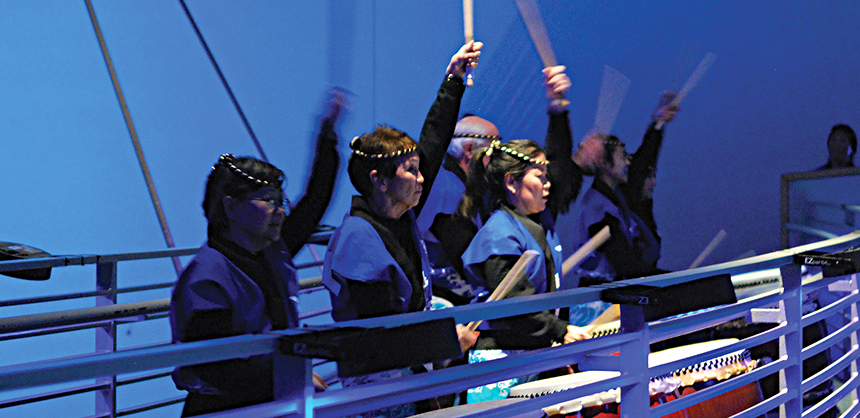Changing PlansOctober 23, 2020
Planners Must Be Able To Adapt To Last-Minute Changes Such As Weather, Political Strife — Or A Pandemic By Derek ReveronChanging Plans
Planners Must Be Able To Adapt To Last-Minute Changes Such As Weather, Political Strife — Or A Pandemic
Don’t pack the agenda too tightly. Build in a little extra time — 10-15 minutes per session — to have some flexibility to manage changes. Photo via DepositPhotos.com
Before the COVID-19 pandemic, there were the usual last-minute meeting changes that boosted planner stress levels. Examples include everything from a corporation’s quarterly sales soaring and executives deciding to plan a surprise incentive trip on short notice, to a company president scheduled to give a short speech, but changes plans on-site to include visual aids, and the meeting space isn’t set up for A/V.
Traditional last-minute changes are maddening for even veteran planners. Late changes in individual meetings were routine for planners until they were suddenly forced to cope with changes in nearly every event due to COVID-19, which took the industry from thriving to a complete shutdown. “The toughest last-minute changes to deal with are the ones that are completely out of control of the client, planner and host location,” says Katherine Stokoe, manager of meetings and events at Paragon Events. “In today’s climate, the focus is on force majeure changes such as COVID-19. The pandemic sparked a wave of last-minute changes, postponements, cancellations and contingency plans to immediately go into action.”
Stokoe offers this advice to fellow planners: “During these changes, the most important thing to recognize is that the situation was clearly unknown and unimaginable but, as meeting professionals, it is our responsibility to remain calm, stay informed and continue to take a proactive approach.”
Expect a Rebound
Planners expect face-to-face meetings to eventually rebound strongly, as it has from past industry upheavals, including the SARS and MERS viruses, 9/11 and the recession of 2008.
But it’s different this time. “Every planner knows that something unexpected is going to happen with their meetings,” says DeShawn Wynn, CMP-HC, chief meeting architect at Wynning Touch Event Design. “You can never fully prepare for changes. But COVID-19 is so far from what anyone in this industry has experienced. This is totally new territory.”
The coronavirus caused last-minute and ongoing changes in every area of every type of meeting. “The coronavirus has brought many challenges — the most critical being the decision whether to go forward with a program in 2020 or wait and reschedule for 2021,” says Mary Beth Jenson, CMP, CMM, strategic meetings manager at Travel and Transport Inc. The uncertainty is a tough issue for planners. “Since the outcome and end to the spread is unknown, the decision-making is difficult,” Jenson says. “Most companies have been taking the safest route, which is postponing or canceling altogether, although air travel had been booked, deposits were re-made for vendors and schedules were disrupted.”
A New Thought Process
According to Jenson, the pandemic may change the way planners think about preparing for future widespread last-minute changes. “This has certainly opened the thinking around meetings and events to new depths, as now we need to be aware of what if this happens again; not necessarily with a pandemic, but another type of black swan event that is totally new with no historical data to guide decisions,” she says. There is little planners can do to plan for, or anticipate, worldwide catastrophes such as pandemics. However, planners can prepare now to have strategies to prevent and mitigate “routine” pre-pandemic, last-minute changes when meetings rebound. Making even basic late revisions can be a daunting task during the best of times, especially for large meetings close to start dates.
The most successful last-minute changes have little or no impact on attendee experiences and meetings. Teri Abram, president of Plano, Texas-based EventLink International Inc., offers an example involving a corporate meeting in Miami. “Two weeks prior to the event, we were asked to decrease the budget by $100,000 due to internal budget changes,” Abram says. “So, we immediately went to work on analyzing each budget line item to see where we could reduce. Luckily,” Abram continues, “the hotel had not placed food orders so we were able to do things such as eliminate food at breaks, and changing or rearranging menus.”
Abram looked at each A/V line item to see where equipment might not necessarily be needed or where she could use the same equipment for multiple purposes. Abram also looked at internet and bandwidth use to reduce costs. In addition, she asked vendor partners to examine areas where they could cut costs without sacrificing quality and attendee experiences. “We were very pleased that the hotel and our vendor partners worked right along with us to reduce costs and we succeeded in our goal,” Abram says. “The client was overjoyed and talked about how we can help them next year.”
Some relatively common last-minute changes are tougher to deal with than others. “There are two scenarios that readily come to mind that are the toughest last-minute meeting changes,” says Greg Jenkins, a partner at Bravo Productions, an event planning and production company. “The first is when the senior VP or CEO prefers to keep everything breezy-casual so changes can be made. But, as we know, concrete plans are essential to pull off a seamless meeting experience.”
The second scenario, Jenkins continues, is when months of planning have taken place and everyone on the production team is on the same page, but a senior VP moves the goalposts and decides to make impromptu changes on the spot. “Some changes can easily be made,” Jenkins says, “but others provide challenges that can easily lead to pandemonium and chaos.” An example includes changing a presentation’s order of slides and cues on-site when the script and PowerPoint are already set. Jenkins has handled such situations by immediately addressing the following questions: Will the A/V team have the new changes? Are the production managers aware of the changes? How does this impact the overall show? Can the changes be done within a reasonable amount of time for review prior to meeting start time?

A New Venue, A Big Problem
Linda Nelson, CMP, owner of To Plan Ahead, an event management company, says the toughest of all late revisions are last-minute venue changes. “I was working with a corporate client to manage a meeting in Vienna, Austria, for approximately 100 people when it became essential for us to relocate to another venue,” she says. “It was only three weeks away from the start date, so there was so much to do within a tight time frame.” Nelson continues, “For instance, we had to research and contract with a new venue, contract with new caterers and the A/V company, etc. while creating new marketing materials and notifying participants about the changes. We pulled it off without a hitch, but it was very anxious and stressful, wondering if we would have enough time and resources to achieve everything.”
Experienced planners offer the following advice for mitigating last-minute changes:
• Designate a small team to identify and troubleshoot late changes. Empower the team to act fast and be effective.
• Have back-up emergency contacts for dependable vendors and other partners who can deliver during a time crunch. Discuss with the contacts their approaches and resources for dealing with late changes.
• Don’t pack the agenda too tightly. Build in a little extra time — 10-15 minutes per session — to have some flexibility to manage changes. Events rarely run on time. Having to make sudden changes to an overloaded agenda worsens potential problems.
• Have corporate clients set the final deadline for rooming lists a few days before they are really needed. Advise attendees that, after the deadline, they must cancel with the hotel. This reduces last-minute planner headaches, since there are always cancellations.
• When using a speakers bureau, include a contract clause for replacing major-program speakers and entertainers. Have speakers arrive two days before their presentations.
• Include extra funds in the budget to help with the cost of late changes, which can be expensive, especially in high-demand destinations.
According to Nelson, “I’m rather conservative when I’m creating the meeting budget, so I will build in a contingency factor to allow for unforeseen items or services. I also keep everyone notified on the status of expenditures.”
Stokoe says meeting budget cuts account for most of the last-minute changes her team resolves. That’s why, she says, “Our recommendation for budget planning always begins with including a 10% to 15% contingency amount for the unexpected, so the client is always seeing an approved budget with coverage for surprises.” She adds, “It’s important to provide weekly updates on the budget based on approved contracts, vendors and items purchased. From there, you can see how expenses are trending and not have any surprises close to the event or during post-meeting reviews.”
Jenkins agrees. He says, “Have a contingency plan and budget to handle last-minute changes.”
Stokoe suggests asking yourself the following key questions: “If you need to make a quick change, do you have dollars that you can devote to solve the problem? If you don’t, how do you fix it?”
Communicate Often
As stated, it’s very frustrating to planners to deal with stakeholders who sign off on meeting plans, and then request last-minute changes, as well as top executives who are not involved in planning but demand late revisions. To prevent such situations, planners advise meeting regularly with event stakeholders and executives to provide updates and get their buy-in. Nelson says it’s important to constantly manage expectations. “To avoid last-minute surprises, I ask many questions of stakeholders to determine what their expectations are and what message they want attendees to take home,” Nelson says. “I also have a basic checklist of items that I send to stakeholders. The list becomes part of my design plan, and it’s a fluid document that’s updated daily.”
Sometimes, despite a planner’s best efforts, stakeholders don’t communicate. “I worked with one client who refused to communicate regularly and so it was a total shock when, two weeks from the meeting, I found out we needed to have an additional meeting room for 70 people in a classroom format,” Nelson says. “Fortunately, the hotel was able to accommodate us, but we were lucky.”
Stokoe suggests planners “schedule weekly or bi-monthly calls with clients to ensure that they stay regularly updated on internal items that may spark last-minute changes. Communication is key to mitigating potential challenges.” Other suggestions include setting expectations once it’s clear that a change is needed; straightforwardly communicate the cost, time and logistics for making last-minute changes that will achieve meeting goals; create a checklist to track additional details of changes, as thoroughness increases the odds of successfully making last-minute changes.
Having limited time makes it even more important to define the meeting’s goal and focus on must-haves. Jenkins advises: “Figure out what needs to happen immediately and what can happen later.” For example, a planner might have to deal with one change that will have a domino effect and cause other changes. “Handle the first one and then address the others in order of importance.” Also, track last-minute changes by type, reason for occurrence and outcome; and identify areas most vulnerable to changes based on the type of meeting and its history. “Tracking the most frequent last-minute changes can help planners prepare for those that might arise,” Jenkins says, adding, “Historical records are always helpful.”
Stokoe agrees. “Tracking different types of last-minute changes is a best practice that we have in place during our post-event recap,” she says. “By including these cases in our final event analysis, it becomes part of future plans and allows for automated crisis management support.”
But planners should be careful about thinking that a pattern of last-minute changes for some corporate groups can apply to others.

Taiko drummers perform at an event after thunderstorms forced opening night activities planned outside to move inside. Photo Courtesy of Greg Jenkins
Handling Stress
Due largely to last-minute changes, a career in planning usually appears on lists of the top-10 most stressful professions, along with firefighting, police work and military service. Planners cite frequent last-minute changes as a primary reason for their high stress levels. Although planners are experts at handling stress, last-minute madness can push their anxiety to the limit. That’s why Wynn urges planners to call on their “special skills” to remain calm. “We are built to be able to make changes and decisions on the fly,” Wynn says. “Meetings are always stressful, but the most important quality of meeting planners is the ability to not allow stress to keep them from getting the job done.”
Jenkins agrees, suggesting that planners “stay calm and have adequate staff to help resolve any last-minute issues.” Also, he suggests planners hire seasoned professionals to serve as leads to help manage problems, get proper sleep, and stay hydrated and nourished, to provide the energy to get through crises.
Another important tip: maintain a sense of humor. Venting frustration with stakeholders or executives who dally or suddenly change plans can be counterproductive. “Be the beacon of continuity,” Stokoe says. “Our jobs are to always provide clear and concise communication and create a sense of calm.” She adds that planners can learn more about themselves and clients during the current crisis. “This is when you learn your clients’ personalities and your ability to be chameleon-like to support them while staying aware of surroundings and changes. This will allow you to show yourself as the expert.”
Eventually, pre-pandemic types of last-minute changes will once again become the norm, and that may be a welcome sign of industry normalcy. C&IT








